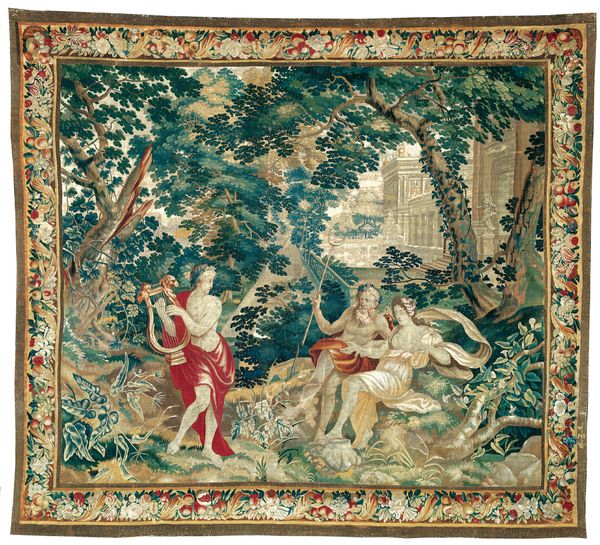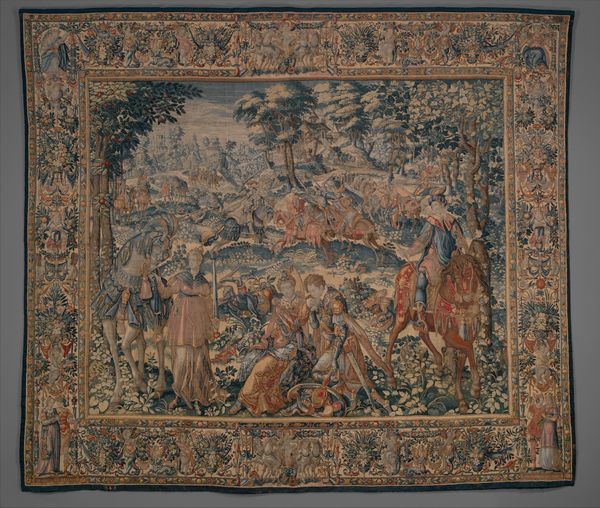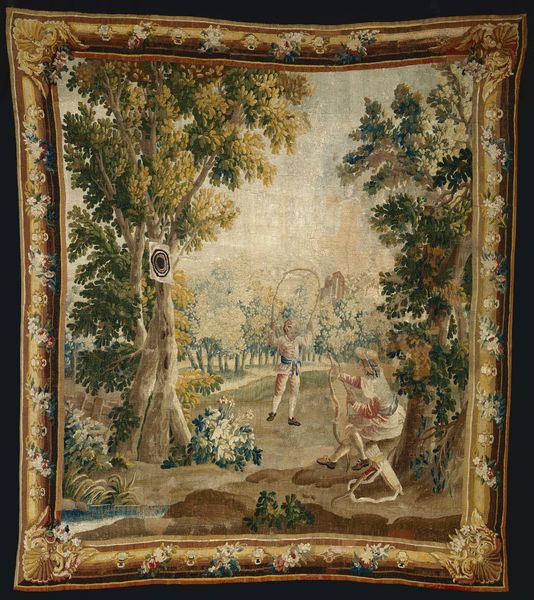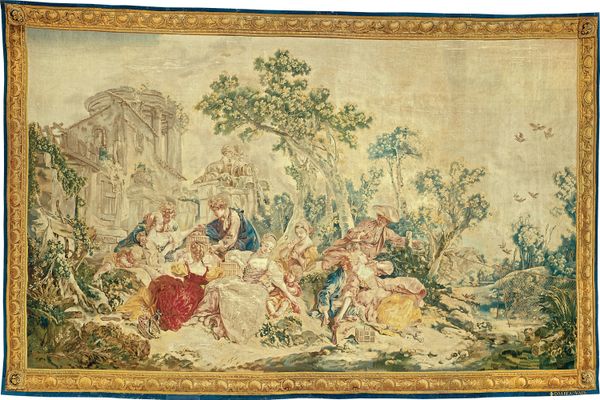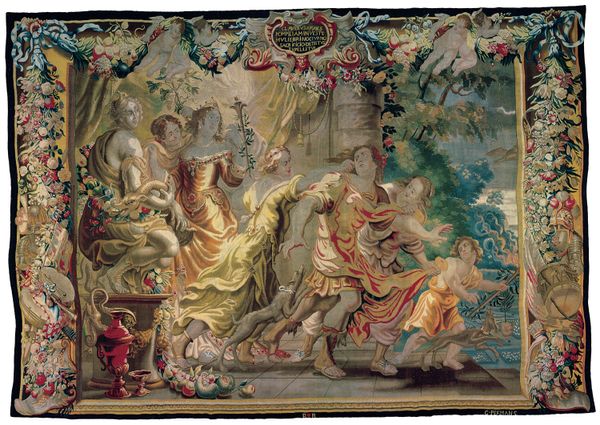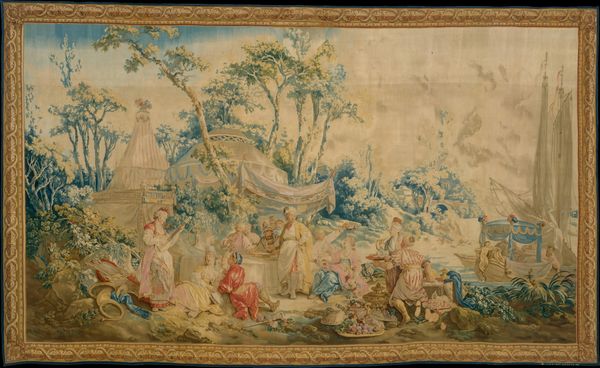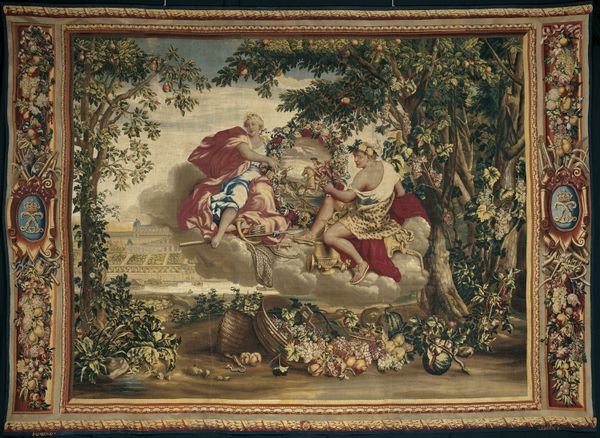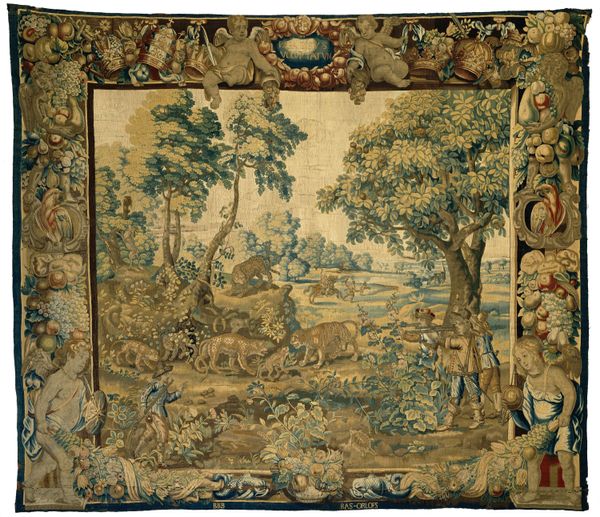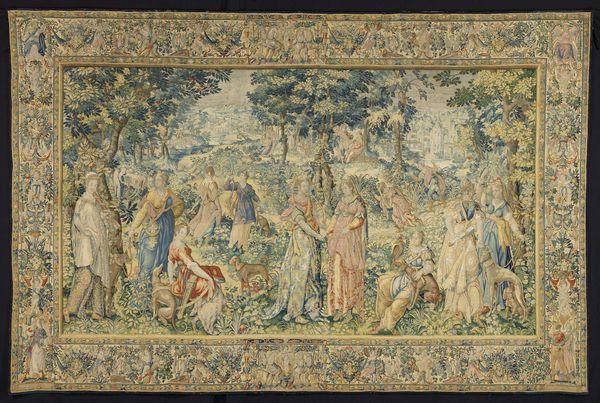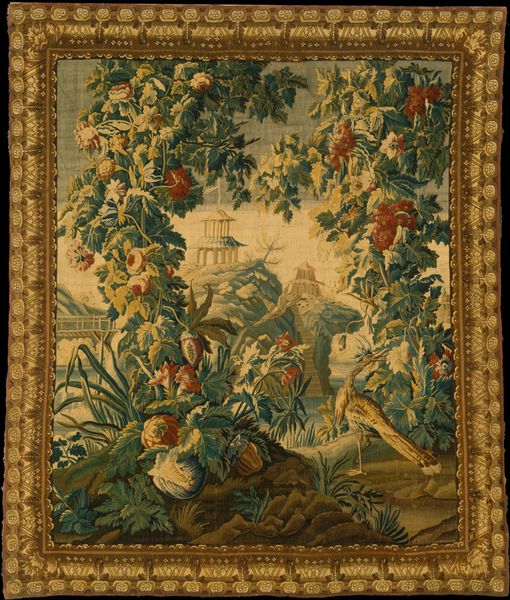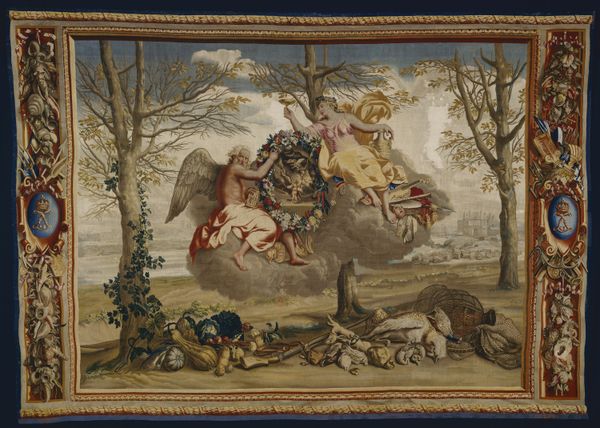
Boreas and Orithyia from a set of scenes from Ovid's Metamorphoses 1685 - 1730
0:00
0:00
textile, sculpture
#
tree
#
baroque
#
landscape
#
textile
#
figuration
#
sculpture
#
men
#
history-painting
#
decorative-art
Dimensions: 11 ft. 8 in. × 14 ft. 11 in. (355.6 × 454.7 cm) (as measured by Textile Conservation in 1984)
Copyright: Public Domain
Curator: This textile hanging depicts the abduction of Orithyia by Boreas, rendered between 1685 and 1730. It comes to us from the studio of René Antoine Houasse. What strikes you most about it? Editor: Its pastoral violence, definitely. These women look as though they’ve been disturbed from an afternoon picnic, the foreground practically overflowing with flowers and fine linens. It’s all quite lush, until you see Boreas bearing down, disrupting this peaceful idyll with decidedly non-consensual energy. Curator: Right, Houasse captures a pivotal moment from Ovid’s Metamorphoses. Boreas, the north wind, has grown impatient with Orithyia's rejection, and so chooses force. This tapestry is particularly interesting as an instance of history-painting in the decorative arts; such works functioned not only as opulent adornment, but as displays of cultural erudition and power. Editor: Absolutely, power plays are central here. The choice to depict this story, framed within the context of luxury textile production, tells us so much about how patriarchal power fantasies were woven quite literally into the fabric of courtly life. Notice, for instance, how passive the women are, their postures conforming to patriarchal expectations. It reinforces the power dynamics. Curator: It’s important, though, to think about its broader cultural reception, too. While we can dissect the male gaze prevalent here, tapestries like these were often commissioned by patrons aiming to cultivate a particular image, aligning themselves with classical narratives and the power structures they implied. These were key visual and material components to build cultural authority at the time. Editor: That’s right; the artwork becomes a social actor, a stage on which power is performed and negotiated. Considering today’s world, such artifacts call on viewers to examine how contemporary gendered violences and power disparities may echo in these stories from Ovid and so many other aspects of the artistic and visual canons. It encourages us to bring a critical consciousness into our experiences with culture, not only as a look at the past, but as a means to critically look to the present and the future.
Comments
No comments
Be the first to comment and join the conversation on the ultimate creative platform.
